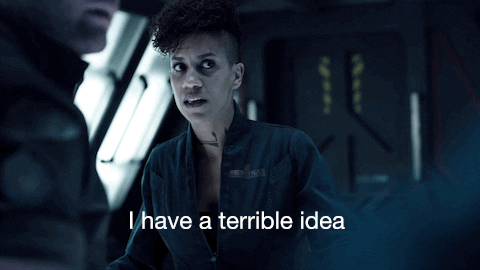- Geeky Insights for AI Enthusiasts
- Posts
- 🤔 AI’s role in creating not food
🤔 AI’s role in creating not food
AI is powering the Ag industry

Happy Friday!
“Humans can be better than they are, so let’s do that.” ― James S.A. Corey, Caliban's War
Let’s dive into the Expanse. Well, the food economy of the Expanse.
In today’s newsletter:
AI’s role in creating not food — And it may just give her a run for her money.
Startups
Papers
Creepy or no
Learn
Penses

Gif by syfy on Giphy
A few years back, there was a book series called the Expanse. It was great. And like a book with a great idea, it was made into TV series on Syfy. It was pretty good but not great and got cancelled. Then Amazon picked it up and just ruined the rest of it. (See that series here) Amazon please stop ruining great books. You’re like 10/10 at that right now.
Anyway, the series really takes a look at the economies of the future when we start colonizing the moon, Mars, and beyond.
Lately, I’ve been re-listening to it on Audible (Start book 1 here). And it got me thinking about how AI is likely going to ruin food for me. And that I’m glad I’ll be dead before that happens.
In the Expanse, food is farmed indoors. They genetically modify it to basically not come from any plant or animal we attribute food to today. Like cheese doesn’t come from real cows, cows may be grown in pieces for the ultra wealthy, food is a paste-like condiment mixed with stuff...well, it doesn’t sound good. Space colonization will completely suck at this rate.
So today, we’re going to look at good ag-tech that will help us produce good quality tasty real beef and plants.
Startups

This Swis company, Swegreen, has a different approach. They want to grow food in stores. They want to make food, ‘hyperlocal’.

Pretty cool, huh?
Papers
Here’s some of the insights I gathered from papers today:
Crop mapping is pretty hard if you have bad satellite footage. There’s a few scientist looking into the application of ML methods for crop segmentation. They’ve used the standard tools like XGBoost but recently looked at UNet and ResUnet. I’ve not heard of the these but you can read more here.
Then I took a look at plant disease prediction. If they "consumerized" this, my mom will have a new toy for her gardening hobby. I actually want to find these guys and find someone to give them money. They are a science team based out of Nepal. They’ve tested quite a few models for different stages of their architecture ( Faster R-CNN, Cascade Faster R-CNN, Feature Pyramid Network (FPN), and Cascade FPN.SSD, CenterNet, YOLOv3, YOLOv4, YOLOv5, and EfficientDet). Then in theapp, it will make gardening recommendations. My mom can’t be the only grandma with a gardening hobby that would eat this up. Read more here.
Creepy or no?
Now for that part of the newsletter where scientists do creepy things for theoretically good reasons.
Organ donations saves a lot of lives each year but there aren’t always matches available for those in need. Plus there’s a whole black market trade of selling organs of humans being trafficked.
So, naturally, we should figure out a solution. One of those solutions is to grow organs in a lab. And we’ve been trying for decades. See strange things I found out here, here, and here.
My bottom line. I don’t want my flat steak grown in a lab. I want it living a pleasant life eating idk grass and then…. ☠️
Moving on.
Learn
So what are these computer vision models that are enabling the next generation of farming technologies?
Here’s an overview for my non-techie counterparts:
A slightly longer introduction to object detection.
For data science buddies, get coding.

This has a been A Geeky Production